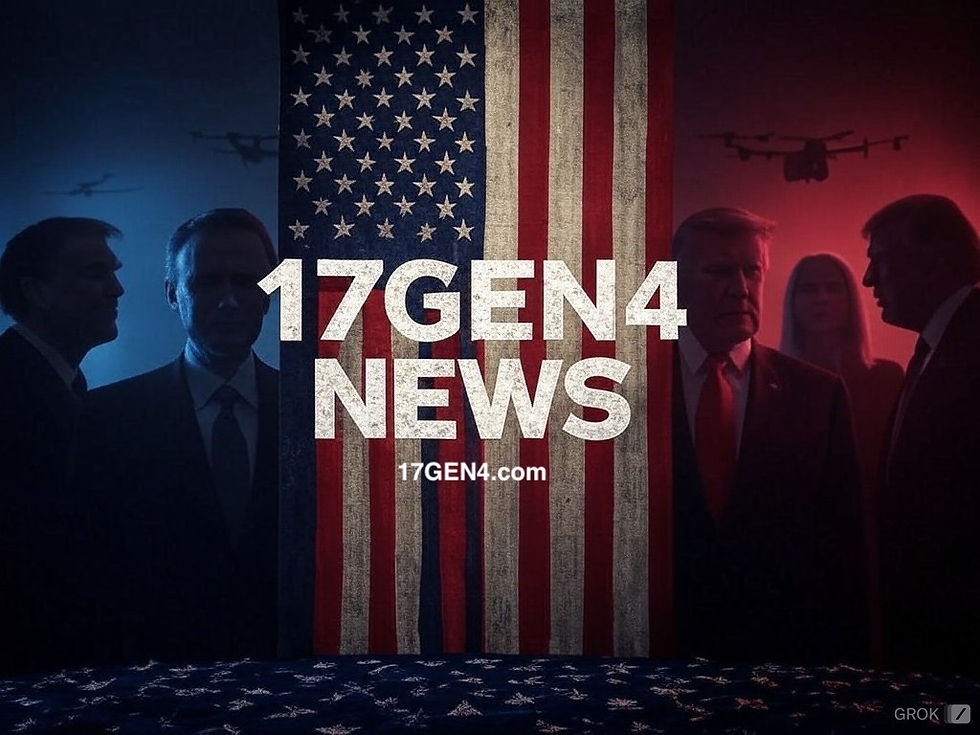AI, ESG, Alignment and Context starting with Tariffs and moving through the supply chain
- 17GEN4

- Apr 6
- 3 min read
Tell me about how AI aligned with ESG is going to affect the context of the supply chain following the implementation of tariffs between competing nations and economies.
The intersection of AI aligned with Environmental, Social, and Governance (ESG) principles and the imposition of tariffs between competing nations is poised to significantly reshape supply chains. As of April 6, 2025, this dynamic is increasingly relevant given ongoing geopolitical tensions, trade policy shifts, and a global push toward sustainability. Here's how this convergence might play out:
AI, when integrated with ESG goals, enhances supply chain management by optimizing resource use, improving transparency, and mitigating risks—all of which become critical when tariffs disrupt traditional trade flows. Tariffs, often used as economic tools to protect domestic industries or retaliate in trade disputes, increase the cost of imported goods and components. This forces companies to rethink their supply chain strategies, often shifting from globalized, cost-driven models to more localized or resilient ones. AI steps in as a powerful enabler here, aligning with ESG by addressing environmental efficiency, social responsibility, and governance accountability amidst these changes.
On the environmental front, tariffs can incentivize reshoring or nearshoring to reduce reliance on distant suppliers, cutting transportation-related emissions—a key ESG metric. AI can amplify this by analyzing vast datasets to identify low-carbon suppliers closer to home, optimizing logistics routes, and predicting energy-efficient production schedules. For example, AI-driven predictive analytics can help companies adapt to tariff-induced cost hikes by finding sustainable alternatives, like sourcing from regions with renewable energy-powered manufacturing, thus reducing the supply chain’s carbon footprint.
Socially, tariffs between competing economies can disrupt labor markets, particularly in export-heavy nations. AI aligned with ESG can assess supplier compliance with fair labor practices across borders, ensuring that new supply chain configurations—perhaps shifted due to tariff pressures—don’t compromise worker rights or community welfare. For instance, AI tools can monitor real-time data from suppliers to flag risks like forced labor or unsafe working conditions, which might spike as companies scramble to reroute production under tariff constraints.
From a governance perspective, tariffs heighten the need for transparency and regulatory compliance in supply chains. AI can streamline ESG reporting, ensuring companies meet evolving standards like the EU’s Corporate Sustainability Reporting Directive, even as trade barriers complicate sourcing. It can also simulate tariff scenarios, helping firms maintain ethical procurement practices and avoid over-reliance on regions with lax governance, which might otherwise become attractive due to lower costs post-tariffs.
However, this isn’t without challenges. Tariffs can shrink profit margins, pushing companies to prioritize cost over ESG ideals, potentially sidelining AI investments in sustainability for short-term survival. AI itself, while a boon for efficiency, has an environmental cost—its energy-intensive nature could clash with ESG goals if not powered sustainably. Moreover, competing nations imposing tariffs might fragment global ESG standards, making it harder for AI to harmonize data across jurisdictions.
In practice, imagine a U.S. manufacturer facing steep tariffs on Chinese components in 2025. AI could identify North American suppliers with strong ESG credentials, optimize production to offset tariff costs, and ensure compliance with domestic sustainability mandates—all while maintaining competitiveness. Conversely, a Chinese exporter hit by tariffs might use AI to pivot to greener local markets, enhancing supply chain resilience and ESG alignment.
Ultimately, AI aligned with ESG can turn tariff-driven disruptions into opportunities for supply chains to become more sustainable, equitable, and well-governed. It’s a balancing act: leveraging technology to navigate economic nationalism while staying true to long-term sustainability goals. The outcome depends on how proactively companies invest in AI and whether global trade tensions push toward collaboration or further silos. 17GEN4.com


Comments